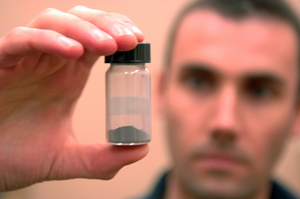|
||
      |
Citations
Guide to plagiarism
As the list of alleged plagiarists grows—last year first-time novelist
Kaavya Viswanathan joined writers such as J. K. Rowling, Stephen Ambrose,
William Shakespeare, and Jonathan Swift among the accused—Law School
senior lecturer Richard A. Posner asks: what is plagiarism? In
The Little Book of Plagiarism (Pantheon, 2007), the federal appellate
judge traces the concept’s cultural and historical evolution in search
of a workable contemporary definition. Taking Harvard undergraduate Viswanathan
as an example and concentrating on legal notions of concealment, fraud,
and unfair competition, Posner finds some forms of literary theft more
grievous than others. Everyone understands, for instance, that judges sign
opinions often written by their clerks, but professors who put their names
on research assistants’ papers do not get a pass. Viswanathan, he
writes, lifted verbatim passages from a competing author, while Shakespeare,
T. S. Eliot, and Samuel Coleridge, whom Posner does not fault, openly borrowed
words and ideas from writers they admired.

Dauphas examines ocean sediment found in Earth’s oldest rocks.
Prehistoric snowball Earth
Carbon dioxide may be the scourge of today’s
environmentalists, but 3.75 billion years ago the greenhouse gas likely
saved the planet from turning to ice, says Chicago geophysicist Nicolas Dauphas.
Working with scientists from the University of Colorado, he analyzed the
iron composition of ancient rocks from northern Quebec—among the
oldest ever discovered—and determined that they contained sediments
precipitated from seawater during the Precambian Period, a time when the
sun was 25 times fainter than it is now. The rocks’ banded-iron formation
offers the first evidence that early oceans included iron carbonates, which
only form in an atmosphere rich with carbon dioxide. Present at much higher
levels than exist today, the gas would have acted as an important planetary
thermostat, keeping Earth hospitable to life. Dauphas and his team reported
their findings in the February 28 Earth and Planetary Science Letters.
Racial stereotype gets an F
Often stereotyped as simultaneously overachieving
and delinquent, Asian American teens in fact behave like most others. So
argues Yoonsun
Choi, a School of Social Service Administration researcher, in
the January Journal of Youth and Adolescence. Analyzing the results
of a ten-year survey that followed some 13,000 seventh- through 12th-graders,
Choi found grades, not race, to be the strongest predictor of Asian American
youth behavior—just as it is for the behavior of whites, Hispanics,
and African Americans. Higher GPAs correlated with lower rates of drinking,
smoking, sex, pregnancy, and gang initiation. Some connections were particularly
close: 22 percent of Asian Pacific Island teenage girls with a D average
reported having been pregnant, while among those with an A average, only
two percent said they’d ever been pregnant.
Room to think
Only a few million years after the evolutionary split
between humans and chimpanzees, people’s brains now outweigh those of their closest animal-kingdom
cousins by 250 percent. Human brains also have become dizzyingly complex,
a factor that has slowed the pace of brain evolution. Ecology & evolution
department chair Chung-I Wu collaborated with Japanese
and Taiwanese colleagues to sequence and then compare several thousand
genes expressed in the brains of humans, chimpanzees, mice, and macaque
monkeys. The researchers found that although more advanced species displayed
quicker evolution rates overall—humans outpaced primates, who outpaced mice—the
order was reversed for genes expressed only in the brain. Reporting its
findings in the December 26 PLOS Biology, Wu’s team attributed
the deceleration to increased complexity of encephalic protein interactions.